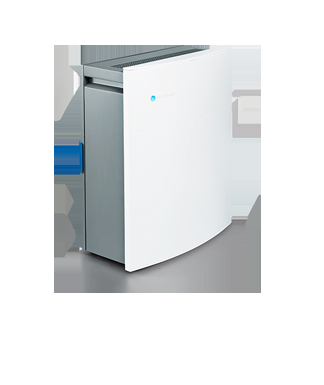 We previously reviewed a Blueair Swedish filter which showed excellent results for friends who suffer from cat allergies.
We previously reviewed a Blueair Swedish filter which showed excellent results for friends who suffer from cat allergies.
Now, in the wake of recent research on the negative human health effects of breathing microplastics, Blueair has announced that all its air purifiers remove airborne microplastics. Due to their small size, microplastics once inhaled, travel into the deep lung where they may induce lesions in the respiratory system. Microplastics found in lung tissue indicate that the body is not able to rid itself of the particles – ie that the microplastics are bio-persistent.
Microplastics have been found in both indoor and outdoor air. However, the concentration of microplastic pollution in the indoor air is higher than outdoors according to findings presented in 2018 by researchers from École Nationales des Ponts et Chausées. Considering that we spend about 90 per cent of our time indoors, this poses a significant health risk.
Top ten tips on how to reduce airborne microplastics at home
1. Ensure good ventilation in your home – the concentration of airborne plastics is much higher in indoor air than in outdoor air.
2. Vacuum frequently to free your floor from microplastic dust that collects there.
3. Reduce or remove carpets, which trap plastic fibres and particles.
4. Choose a hardwood or ceramic tile floor. Vinyl and linoleum flooring can release microplastics into the air.
5. Avoid synthetic clothing as they shed plastic fibres, which can be inhaled.
6. Use organic, natural fabrics and textiles in home furnishings.
7. Do not buy toys made of plastic or that have plastic parts. Opt for wood or natural rubber toys instead.
8. Avoid cosmetics, soap, facial scrub and toothpastes containing microbeads.
9. Drink filtered tap water instead of water from single-use plastic bottles to reduce the amount of plastic you bring into your home.
10. Put an air purifier in the rooms where you spend most of your time. All Blueair air purifiers for home remove airborne microplastics.
Airborne microplastics can be removed by an air purifier tested for 0.1 um removal rate. Thanks to its unique HEPASilent™ filtration technology, Blueair air purifiers remove airborne particles down to 0.1um in size, including microplastic particles and fibres. Read more about how Blueair air purifiers remove airborne microplastics: https://www.blueair.com/se/campaign/microplastic
